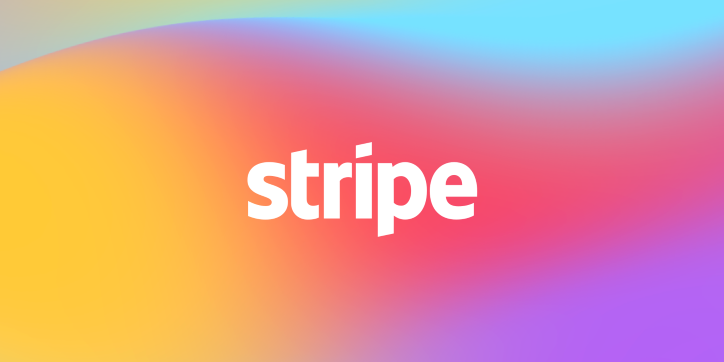AI Integration Cost Optimization: A Guide to Token Management and Pricing
At Lightwave Labs, we specialize in integrating AI capabilities into web and mobile applications. One of the most crucial aspects of AI integration is understanding and optimizing costs. This guide will help you navigate the complexities of AI pricing models and implement effective token management strategies.
Understanding AI Service Providers
OpenAI
- GPT-4 Turbo: $0.01/1K input tokens, $0.03/1K output tokens
- GPT-3.5 Turbo: $0.0005/1K input tokens, $0.0015/1K output tokens
- DALL-E 3: $0.040-0.080 per image
- Whisper API: $0.006 per minute
Anthropic
- Claude 3 Opus: $0.015/1K input tokens, $0.075/1K output tokens
- Claude 3 Sonnet: $0.003/1K input tokens, $0.015/1K output tokens
- Claude 3 Haiku: $0.00025/1K input tokens, $0.00125/1K output tokens
What Are Tokens?
Tokens are the fundamental units that AI models process. Think of them as pieces of words:
- "Hello" = 1 token
- "indescribable" = 4 tokens
- "AI" = 1 token
// Example token counting function
function estimateTokenCount(text) {
// Rough estimation: 1 token ≈ 4 characters
return Math.ceil(text.length / 4);
}
// More accurate using tokenizer library
import { encoding_for_model } from "@dqbd/tiktoken";
function getExactTokenCount(text, model = "gpt-3.5-turbo") {
const enc = encoding_for_model(model);
return enc.encode(text).length;
}
Cost Optimization Strategies
1. Implement Token Caching
// Redis caching example
const Redis = require('redis');
const client = Redis.createClient();
async function getCachedResponse(prompt) {
const cached = await client.get(hashPrompt(prompt));
if (cached) {
return JSON.parse(cached);
}
const response = await callAIModel(prompt);
await client.set(hashPrompt(prompt), JSON.stringify(response), 'EX', 3600);
return response;
}
2. Prompt Optimization
Poor prompt:
const inefficientPrompt = `
The user's name is ${userName}. The user's age is ${userAge}.
The user's location is ${userLocation}. Please generate a
personalized greeting for the user that mentions all this information.
`;
Optimized prompt:
const efficientPrompt = `
Greet: ${userName}, ${userAge}, ${userLocation}
`;
3. Response Streaming
const openai = new OpenAI();
async function streamResponse(prompt) {
const stream = await openai.chat.completions.create({
model: "gpt-3.5-turbo",
messages: [{ role: "user", content: prompt }],
stream: true,
});
for await (const chunk of stream) {
process.stdout.write(chunk.choices[0]?.delta?.content || "");
}
}
Cost Monitoring and Budgeting
Implementation Example
class AIUsageTracker {
constructor() {
this.dailyTokens = 0;
this.dailyLimit = 100000; // 100K tokens
}
async trackUsage(inputTokens, outputTokens) {
this.dailyTokens += inputTokens + outputTokens;
if (this.dailyTokens > this.dailyLimit) {
throw new Error('Daily token limit exceeded');
}
await this.logUsage(inputTokens, outputTokens);
}
async logUsage(inputTokens, outputTokens) {
const cost = this.calculateCost(inputTokens, outputTokens);
await database.log({
date: new Date(),
inputTokens,
outputTokens,
cost
});
}
}
Best Practices for Cost Management
- Request Batching
async function batchRequests(prompts) {
const batchSize = 5;
const results = [];
for (let i = 0; i < prompts.length; i += batchSize) {
const batch = prompts.slice(i, i + batchSize);
const responses = await Promise.all(
batch.map(prompt => callAIModel(prompt))
);
results.push(...responses);
}
return results;
}
- Context Window Optimization
function optimizeContext(conversation, maxTokens = 4000) {
let tokenCount = 0;
return conversation.filter(msg => {
tokenCount += estimateTokenCount(msg.content);
return tokenCount <= maxTokens;
});
}
Real-world Implementation at Lightwave Labs
At Lightwave Labs, we've helped numerous clients integrate AI capabilities while maintaining cost-effectiveness. Here's how we approach AI integration:
-
Initial Assessment
- Analyze use cases and expected volume
- Select appropriate AI models
- Design caching strategies
-
Implementation
- Set up monitoring systems
- Implement caching layers
- Optimize prompts and responses
-
Ongoing Optimization
- Monitor usage patterns
- Adjust caching strategies
- Fine-tune prompt templates
User-Based Cost Analysis and Subscription Management
Understanding per-user AI costs is crucial for sustainable pricing strategies. Here's how to implement a comprehensive tracking system:
User Cost Tracking Implementation
class UserAIUsageTracker {
constructor(userId, subscriptionTier) {
this.userId = userId;
this.subscriptionTier = subscriptionTier;
this.modelCosts = {
'gpt-4-turbo': {
input: 0.01, // per 1K tokens
output: 0.03
},
'gpt-3.5-turbo': {
input: 0.0005,
output: 0.0015
},
'claude-3-sonnet': {
input: 0.003,
output: 0.015
}
};
}
async trackUserSession(model, inputTokens, outputTokens) {
const cost = this.calculateSessionCost(model, inputTokens, outputTokens);
await this.updateUserMetrics(inputTokens, outputTokens, cost);
await this.checkCostThresholds();
return cost;
}
calculateSessionCost(model, inputTokens, outputTokens) {
const modelRates = this.modelCosts[model];
const inputCost = (inputTokens / 1000) * modelRates.input;
const outputCost = (outputTokens / 1000) * modelRates.output;
return inputCost + outputCost;
}
async updateUserMetrics(inputTokens, outputTokens, cost) {
const month = new Date().toISOString().slice(0, 7); // YYYY-MM
await database.userMetrics.updateOne(
{ userId: this.userId, month },
{
$inc: {
totalTokens: inputTokens + outputTokens,
inputTokens: inputTokens,
outputTokens: outputTokens,
totalCost: cost
},
$push: {
dailyUsage: {
date: new Date(),
tokens: inputTokens + outputTokens,
cost
}
}
},
{ upsert: true }
);
}
async checkCostThresholds() {
const monthlyMetrics = await this.getMonthlyMetrics();
if (monthlyMetrics.totalCost > this.getCostThreshold()) {
await this.handleCostThresholdExceeded(monthlyMetrics);
}
}
async handleCostThresholdExceeded(metrics) {
// Notify administrators
await notifyAdmins({
userId: this.userId,
metrics,
message: 'User exceeded cost threshold'
});
// Consider model downgrade if available
if (await this.shouldDowngradeModel(metrics)) {
await this.recommendModelDowngrade();
}
}
}
Subscription Tier Analysis
class SubscriptionAnalyzer {
async analyzeUserBase() {
const monthlyStats = await this.getMonthlyUserStats();
const analysis = {
profitableUsers: 0,
unprofitableUsers: 0,
modelRecommendations: {},
averageCostPerUser: 0
};
for (const user of monthlyStats) {
const profit = this.calculateUserProfit(user);
const recommendation = this.getModelRecommendation(user);
if (profit > 0) {
analysis.profitableUsers++;
} else {
analysis.unprofitableUsers++;
analysis.modelRecommendations[user.userId] = recommendation;
}
}
return analysis;
}
calculateUserProfit(userStats) {
const subscriptionRevenue = this.getSubscriptionPrice(userStats.tier);
return subscriptionRevenue - userStats.totalCost;
}
getModelRecommendation(userStats) {
if (userStats.totalCost > userStats.tier.maxCost) {
if (userStats.accuracy.gpt35 > 0.95) {
return 'Recommend GPT-3.5 Turbo';
} else if (userStats.accuracy.claude3haiku > 0.90) {
return 'Recommend Claude 3 Haiku';
}
}
return 'Current model optimal';
}
}
Practical Application
This system allows you to:
- Track Real Costs: Monitor exactly how much each user's AI usage costs your business.
- Optimize Pricing Tiers: Adjust subscription prices based on actual usage patterns.
- Identify Optimization Opportunities: Find users who could be served by more cost-effective models.
- Predict Future Costs: Use historical data to forecast AI expenses.
Here's how to use this data effectively:
// Example usage analysis
async function analyzeUserCosts() {
const analyzer = new SubscriptionAnalyzer();
const monthlyAnalysis = await analyzer.analyzeUserBase();
console.log(`Profit Analysis:
Profitable Users: ${monthlyAnalysis.profitableUsers}
Users Needing Optimization: ${monthlyAnalysis.unprofitableUsers}
Model Change Recommendations: ${
Object.keys(monthlyAnalysis.modelRecommendations).length
}
`);
// Generate optimization recommendations
const recommendations = await generateOptimizationPlan(monthlyAnalysis);
return recommendations;
}
Making Data-Driven Decisions
By implementing this tracking system, you can:
-
Adjust Pricing Strategically
- Set tier limits based on actual usage patterns
- Create new tiers for high-volume users
- Implement fair use policies
-
Optimize Model Selection
- Automatically route requests to cost-effective models
- Implement dynamic model selection based on user needs
- Balance cost vs. performance for each use case
-
Improve User Experience
- Provide usage dashboards to customers
- Alert users approaching their limits
- Offer upgrade recommendations based on usage patterns
This data-driven approach ensures your AI integration remains profitable while providing optimal service to your users. At Lightwave Labs, we help implement these monitoring systems alongside your AI integration, ensuring long-term sustainability of your AI-powered features.
Conclusion
Understanding and optimizing AI costs is crucial for sustainable AI integration. At Lightwave Labs, we specialize in helping businesses implement cost-effective AI solutions. Whether you're building a new AI-powered application or optimizing an existing one, our team can help you achieve the perfect balance of functionality and cost-effectiveness.
Ready to integrate AI into your application? Contact us to discuss how we can help you implement efficient and cost-effective AI solutions.


